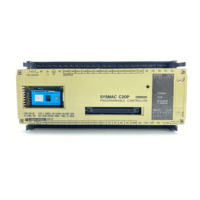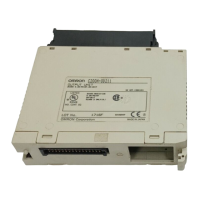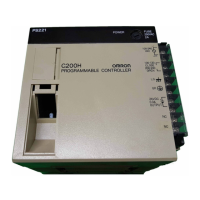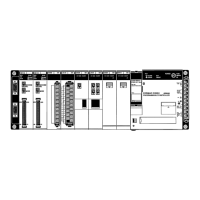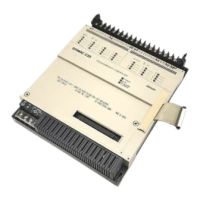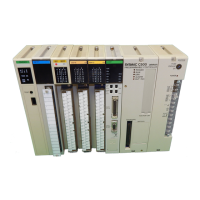!
!
!
!
5Application Precautions
xiii
• Locations subject to corrosive or flammable gases.
• Locations subject to dust (especially iron dust) or salts.
• Locations subject to exposure to water, oil, or chemicals.
• Locations subject to shock or vibration.
Caution Take
appropriate and suf
ficient countermeasures when installing systems in the
following locations:
• Locations subject to static electricity or other forms of noise.
• Locations subject to strong electromagnetic fields.
• Locations subject to possible exposure to radioactivity.
• Locations close to power supplies.
Caution The
operating environment of the PC
System can have a large ef
fect on the lon
-
gevity
and reliability of the system. Improper operating environments can lead to
malfunction,
failure, and other
unforeseeable problems with the PC System. Be
sure
that the operating environment is within the specified conditions at installa
-
tion and remains within the specified conditions during the life of the system.
5 Application Precautions
Observe the following precautions when using the PC System.
WARNING Always heed these precautions. Failure to abide by the following precautions
could lead to serious or possibly fatal injury.
• Always
ground the system to 100
Ω
or less when installing the Units. Not con
-
necting to a ground of 100 Ω or less may result in electric shock.
• Always
turn OFF the power supply to the PC before attempting any of the fol
-
lowing.
Not turning OFF the power supply may result in malfunction or
electric
shock.
• Mounting
or dismounting I/O Units, CPU Units, Memory Cassettes, or any
other Units.
• Assembling the Units.
• Setting DIP switches or rotary switches.
• Connecting cables or wiring the system.
• Connecting or disconnecting the connectors.
Caution Failure
to abide by the following precautions could lead to faulty operation of the
PC
or the system, or
could damage the PC or PC Units. Always heed these pre
-
cautions.
• Fail-safe measures must be taken by the customer to ensure safety in the
event
of incorrect, missing, or abnormal signals caused by broken signal lines,
momentary power interruptions, or other causes.
• Interlock
circuits, limit circuits,
and similar safety measures in external circuits
(i.e.,
not in the Programmable Controller) must be provided by the customer
.
• Always
use the
power supply voltages specified in the operation manuals. An
incorrect voltage may result in malfunction or burning.
• Take
appropriate measures to ensure that the specified power with the rated
voltage
and frequency is supplied. Be particularly careful in places where the
power
supply is unstable. An incorrect power supply may result in malfunction.
• Install
external breakers and take other safety measures against short-circuit
-
ing
in external wiring. Insuf
ficient safety measures against short-circuiting may
result in burning.
